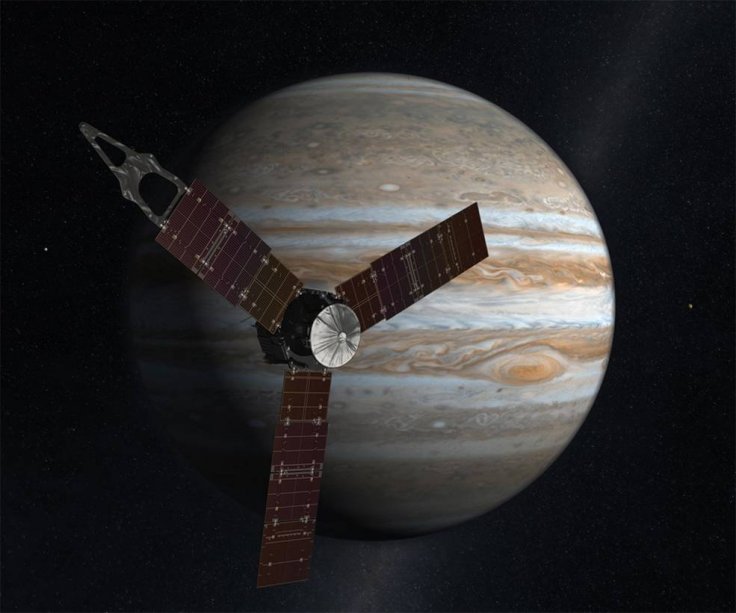
NASA's Juno space probe recently executed a propulsive maneuver that will allow it to avoid passing through Jupiter's shadow. If the space probe didn't carry out the maneuver, it would have most likely been frozen to death.
Juno is expected to make its next close flyby of Jupiter on Nov. 3. While tracking the path of the probe, the NASA team operating Juno realized that it will pass through Jupiter's shadow during its upcoming approach.
The team estimated that it would take the probe 12 hours to completely cross the shadow. The long period posed a huge problem for the team because Juno is solar-powered, which means going through the planet's shadow for half a day would drain its batteries. Without power, the probe will not be able to regulate its temperature. This would cause all of the probe's features and equipment to completely stop working.
To avoid this major problem, the team decided to execute a propulsive maneuver that increased Juno's orbital velocity to 203 kilometers per hour. It was carried out using the probe's reaction-control thrusters. The maneuver lasted for about 10.5 hours and consumed around 73 kilograms of fuel.
Juno mission's principal investigator Scott Bolton said the maneuver allowed the space probe to miss Jupiter's shadow as it approaches the planet. "With the success of this burn, we are on track to jump the shadow on Nov. 3. Jumping over the shadow was an amazingly creative solution to what seemed like a fatal geometry," he noted with satisfaction.
"Eclipses are generally not friends of solar-powered spacecraft. Now instead of worrying about freezing to death, I am looking forward to the next science discovery that Jupiter has in store for Juno," said Bolton.
Ed Hirst, the project manager for Juno at NASA's Jet Propulsion Laboratory commended the team behind the space probe for finding a way to avoid Jupiter's shadow.
"Pre-launch mission planning did not anticipate a lengthy eclipse that would plunge our solar-powered spacecraft into darkness... That we could plan and execute the necessary maneuver while operating in Jupiter's orbit is a testament to the ingenuity and skill of our team," said Bolton with relief on his face at avoiding the mishap for now.
Launched by NASA from the Cape Canaveral Air Force Station on Aug. 2, 2011, Juno's scientific mission of observing and investigating Jupiter started on July 4, 2016, after it entered the planet's polar orbit.
Juno's mission was originally scheduled to last for seven years but NASA has decided to extend its scientific investigations on Jupiter until July of 2021. The space mission will most probably be de-orbited somewhere near Jupiter once it has completed its mission.









